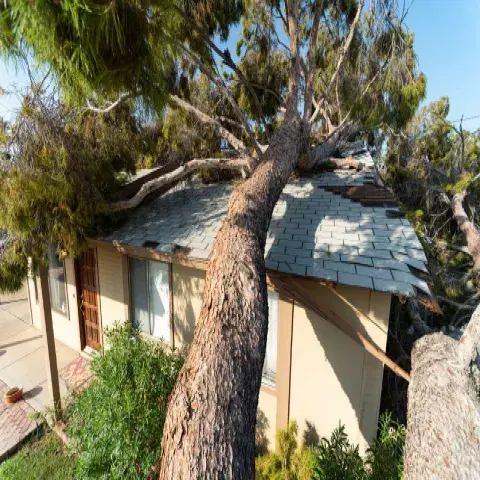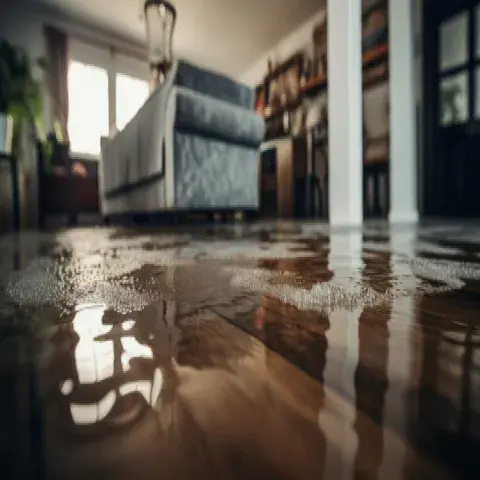Table of Contents
- Homeowner Hurricane Prep Checklist
- 1. Emergency Supply Kit
- 2. Home Preparation
- 3. Your Insurance Policy
- 4. Evacuation Planning
- 5. Filing a Claim After the Storm
- 6. Understanding Flood Insurance
The 2025 hurricane season is officially underway. The conditions may be calm today, but storms can form quickly—and when they do, it’s often too late to act. The days before landfall aren’t the time to review your insurance policy, locate missing documents, or make critical home repairs.
What you do before the storm often matters more than what happens during it. This checklist combines insurance insight, safety planning, and practical advice to help you approach this hurricane season with confidence.
Homeowner Hurricane Prep Checklist
This list goes beyond the basics—covering common oversights and expert-recommended steps that reduce stress and potential loss.
1. Emergency Supply Kit
Build a kit with essentials to last at least 72 hours, even if you don’t expect to evacuate. Include:
- Bottled water (1 gallon per person per day).
- Non-perishable food, manual can opener.
- First aid kit with prescription medications.
- Flashlights and extra batteries (check battery types for each device).
- Backup power banks or solar chargers.
- Weather radio (battery-operated or hand-crank).
- Sanitation items: toilet paper, baby wipes, garbage bags, etc.
- N95 masks and gloves for debris cleanup.
- Emergency cash (ATMs and card readers may be down).
- Copies of insurance policies, ID, and medical records in waterproof sleeves.
- Local maps and evacuation routes (printed). (find your local evacuation routes here)
2. Home Preparation
Taking steps early—before a storm is even on the radar—can significantly reduce the physical damage to your home. But not all preparation needs to happen at once. Here’s how to break it down:
What to Do Weeks or Months Before Hurricane Season
These improvements help strengthen your home’s ability to withstand wind and water damage. Ideally, complete these tasks in the off-season or well ahead of any named storm.
- Inspect your roof; repair missing or loose shingles and check flashing and seals
- Reinforce garage doors with bracing kits or wind-rated upgrades
- Install storm shutters or pre-cut plywood for windows
- Seal doors and windows with caulk and weather stripping
- Elevate HVAC units, pool pumps, and generators above potential flood levels
- Secure fencing and gates to prevent breakaway panels
- Install water alarms and sump pumps in flood-prone areas
- Anchor propane tanks and fuel containers
- Trim large or dead branches around your home
- Schedule professional inspections for roof, foundation, and drainage systems
- Test backup power sources, including generators
What to Do When a Storm Is Forecasted or Days Away
These are short-term actions taken in the week leading up to landfall, especially once watches or warnings are issued.
- Bring in outdoor furniture, grills, and yard décor to prevent projectiles.
- Move potted plants and trash bins indoors or secure them.
- Park vehicles in a garage or away from large trees.
- Clear gutters and downspouts for proper water drainage.
- Turn off irrigation systems to avoid flooding.
- Fill bathtubs and large containers with water for flushing and cleaning.
- Turn refrigerators and freezers to the coldest settings in case of power outages.
- Place sandbags or flood barriers at entry points.
- Photograph the current condition of your property and roof.
- Unplug electronics and move them off the floor.
- Charge all backup batteries and power devices.
3. Your Insurance Policy
The best time to organize your policy documents and claim documents is before a storm is on the horizon.
- Review your homeowners insurance policy and confirm coverage limits
- Understand your deductible, including named storm or windstorm deductibles
- Make sure coverage reflects current rebuild costs and recent renovations
- Update your home inventory (including estimated values) in case of a claim
- Photograph each room, including ceilings, flooring, closets, and appliances
- Store digital backups of documentation in a secure cloud folder
- Bookmark your carrier’s claims page and support contact info
Orion180 policyholders: Download the Orion180 app for quick access to your policy documents and our support team.
4. Evacuation Planning
Make your plan early—don’t rely on last-minute decisions.
- Know your evacuation zone and follow guidance from local authorities.
- Plan at least two evacuation routes in case of closures.
- Find and print your local evacuation routes here.
- Arrange accommodations in advance (hotels, family, or shelters).
- Prepare evacuation bags for each household member.
- Maintain a backup fuel supply if traveling a long distance.
- Don’t forget pet essentials: food, leash, crate, and veterinary records.
5. Filing a Claim After the Storm
If your home experiences damage, documenting it properly and contacting your insurance provider promptly can make the claims process smoother and faster. Here’s what to do:
- Prioritize safety first: Do not re-enter your home until local authorities say it’s safe.
- Take detailed photos and videos of all damage before making any temporary repairs. This includes structural damage, contents, water lines on walls, and damaged appliances.
- Prevent further damage: If it’s safe to do so, make temporary repairs (like placing tarps or boarding windows) to prevent worsening conditions. Keep all receipts related to these emergency fixes.
- Don’t discard damaged items until they’ve been documented and reviewed by your adjuster.
- Keep a log of all communications related to your claim, including dates, names, and contact information.
- Use your insurer’s official channels to report a claim—never share policy details with unverified third parties.
Scams are common after a storm, make sure to stay in close contact with your agent and insurance company with any questions or concerns.
6. Understanding Flood Insurance
Flood damage — such as rising water from storm surge, heavy rain, or overflowing drains — is not covered under your standard homeowners insurance policy. This type of protection requires separate flood insurance.
What’s the Difference?
Water Damage (Home Insurance)
• Burst or leaking indoor pipes (e.g., broken supply lines under sinks or in walls).
• Overflowing appliances (dishwasher, washing machine, etc.).
• Toilet overflow or sewer/drain backup inside the home.
Flood Damage (Flood Insurance)
• Heavy rain runoff entering through doors, basement windows or foundation cracks.
• Rising water from nearby rivers, creeks, or lakes flooding into the home from rapid snowmelt.
• Street flooding or coastal storm surge pushing water into the home.
Flood damage and water damage are handled separately because they involve completely different risks. Homeowners insurance covers accidental water damage that happens inside the home. Flood insurance covers rising water from outside — a broader, more unpredictable event that affects entire neighborhoods, not just individual homes.
Learn more about Orion180 flood insurance by clicking here.
The Time to Prepare Is Before the Storm
Storm readiness isn’t just about getting through the storm—it’s about minimizing damage, accelerating recovery, and protecting your long-term financial health. The best time to review your policies, inspect your home, and create a plan is before the winds pick up and the warnings begin.
At Orion180, we’re committed to supporting homeowners with comprehensive coverage, clear guidance, and personal support—every step of the way.
Talk to your agent today to make sure your home insurance policy is hurricane-season ready.
Click the button below to request a quote for Orion180 flood insurance available in select states.



